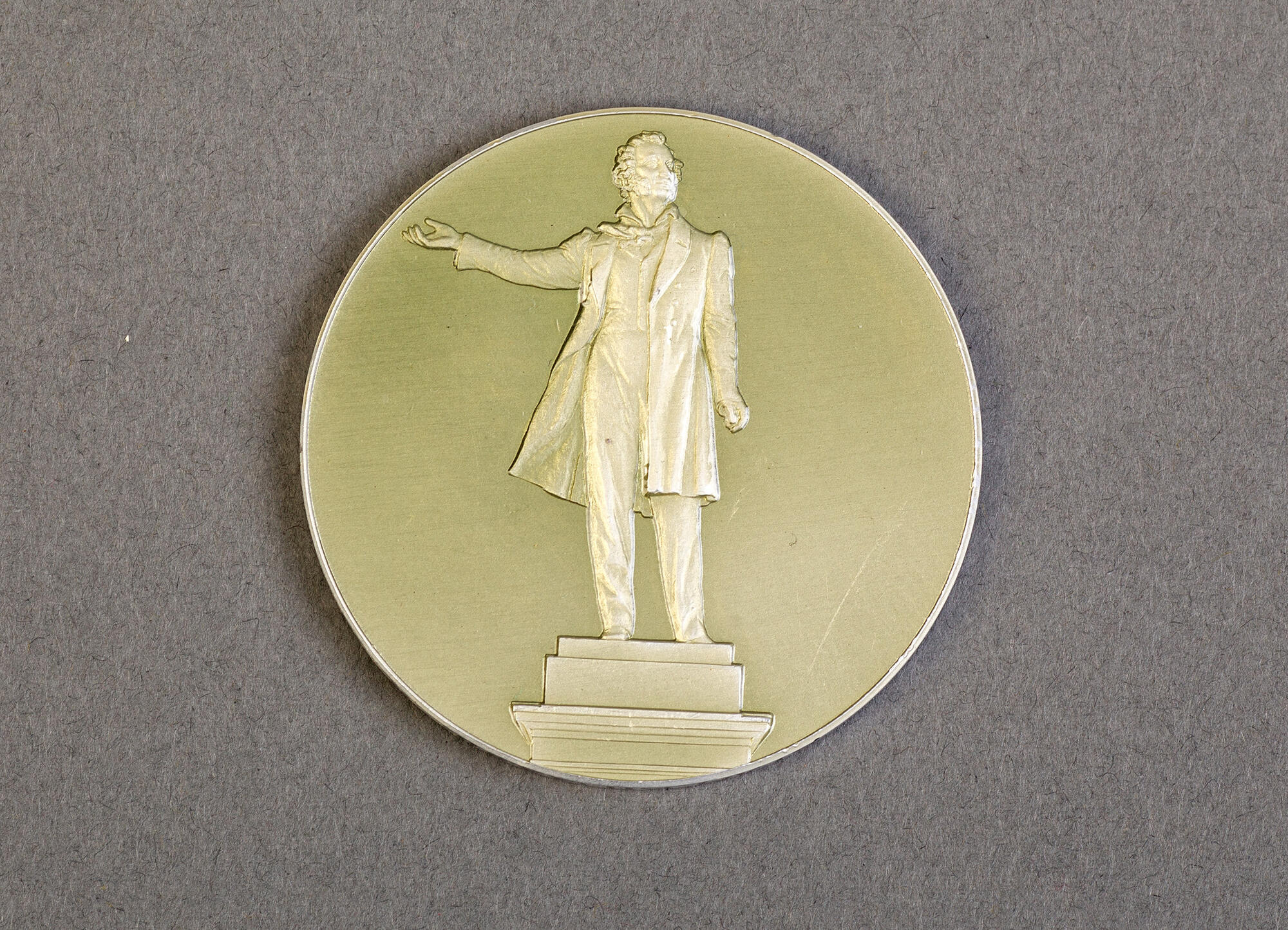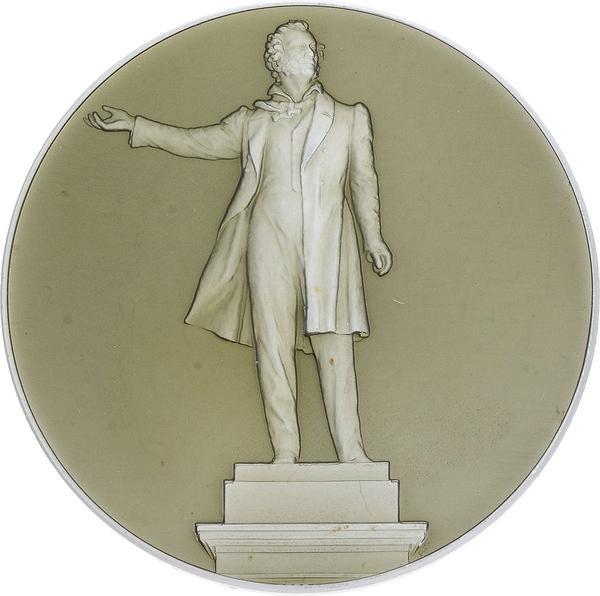Along with documents and photographs from the family album of Arnold Ilyich Gessen, the Belgorod Literature Museum houses some items from his office. All these exhibits were donated to the museum by Gessen’s granddaughter Yelena Viktorovna Kovalenko.
In 1960, at the age of 82, Gessen published his first book about Alexander Sergeyevich Pushkin, which was somewhat of a trip around the poet’s last apartment at 12, Moyka River Embankment. The new author, the sketch-like manner of his narration, and the depth of research captivated the public. From that time on, Gessen’s life revolved around the Pushkin studies, and he wrote six more books, in addition to numerous articles and sketches.
In 1964, the writer visited his hometown of Korocha, where he held meetings with schoolchildren and spoke about his work on the Pushkin theme. The staff of the school named after Alexander Pushkin presented him with a souvenir medallion that featured a dedicatory inscription in honor of his 90th birthday.
The medal is made of light yellow metal and has a glossy finish. The obverse side is decorated with a bas-relief depicting a monument to Pushkin by Mikhail Konstantinovich Anikushin. The monument was erected on Arts Square in Leningrad in 1957.
The reverse is engraved with an excerpt from Pushkin’s poem “Exegi Monumentum”.
The souvenir was created by Alexander Vasilyevich Kozlov, who began his career in 1945 as an engraver’s apprentice at the Leningrad Mint. The famous medalist Nikolay Alexandrovich Sokolov became his first mentor: he introduced Kozlov to the basics of medal composition and taught him how to sculpt a model and cut an image on a metal surface. Alexander Kozlov learned drawing skills under the artist Vladimir Vasilyevich Plastinin.
In 1953, Kozlov, a talented engraver and organizer that he was, became a leader of engravers, and in 1974 he became the chief artist of the Mint. Alexander Vasilyevich Kozlov held this position until his retirement.
Alexander Kozlov created a whole series of souvenir medallions on the Pushkin theme, including those featuring a portrait of Alexander Pushkin and the places where he lived and worked.
In 1960, at the age of 82, Gessen published his first book about Alexander Sergeyevich Pushkin, which was somewhat of a trip around the poet’s last apartment at 12, Moyka River Embankment. The new author, the sketch-like manner of his narration, and the depth of research captivated the public. From that time on, Gessen’s life revolved around the Pushkin studies, and he wrote six more books, in addition to numerous articles and sketches.
In 1964, the writer visited his hometown of Korocha, where he held meetings with schoolchildren and spoke about his work on the Pushkin theme. The staff of the school named after Alexander Pushkin presented him with a souvenir medallion that featured a dedicatory inscription in honor of his 90th birthday.
The medal is made of light yellow metal and has a glossy finish. The obverse side is decorated with a bas-relief depicting a monument to Pushkin by Mikhail Konstantinovich Anikushin. The monument was erected on Arts Square in Leningrad in 1957.
The reverse is engraved with an excerpt from Pushkin’s poem “Exegi Monumentum”.
The souvenir was created by Alexander Vasilyevich Kozlov, who began his career in 1945 as an engraver’s apprentice at the Leningrad Mint. The famous medalist Nikolay Alexandrovich Sokolov became his first mentor: he introduced Kozlov to the basics of medal composition and taught him how to sculpt a model and cut an image on a metal surface. Alexander Kozlov learned drawing skills under the artist Vladimir Vasilyevich Plastinin.
In 1953, Kozlov, a talented engraver and organizer that he was, became a leader of engravers, and in 1974 he became the chief artist of the Mint. Alexander Vasilyevich Kozlov held this position until his retirement.
Alexander Kozlov created a whole series of souvenir medallions on the Pushkin theme, including those featuring a portrait of Alexander Pushkin and the places where he lived and worked.



